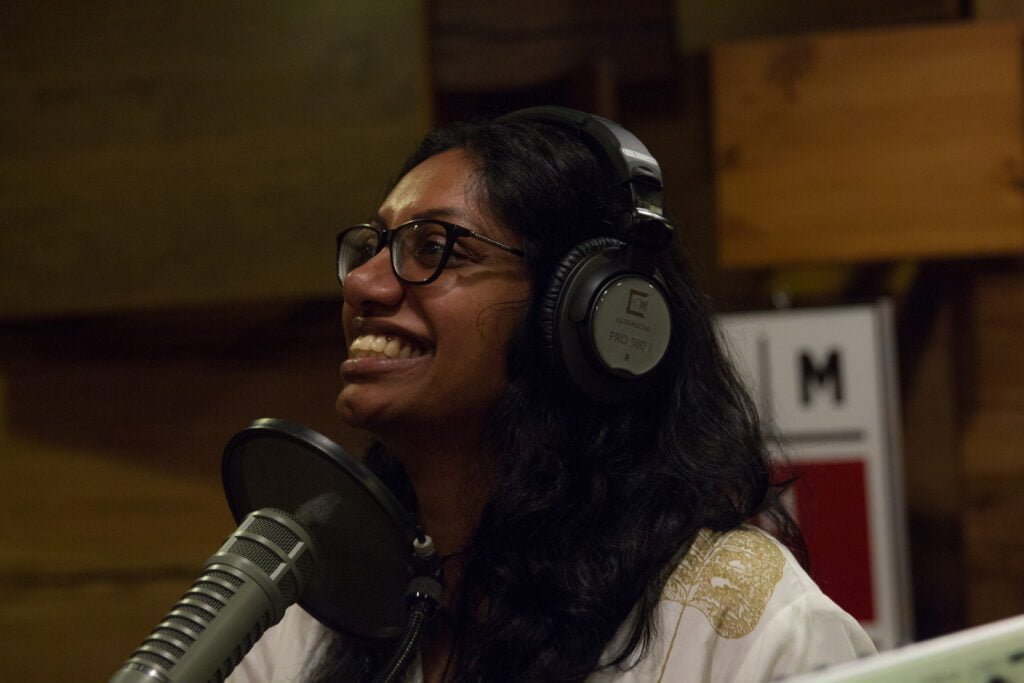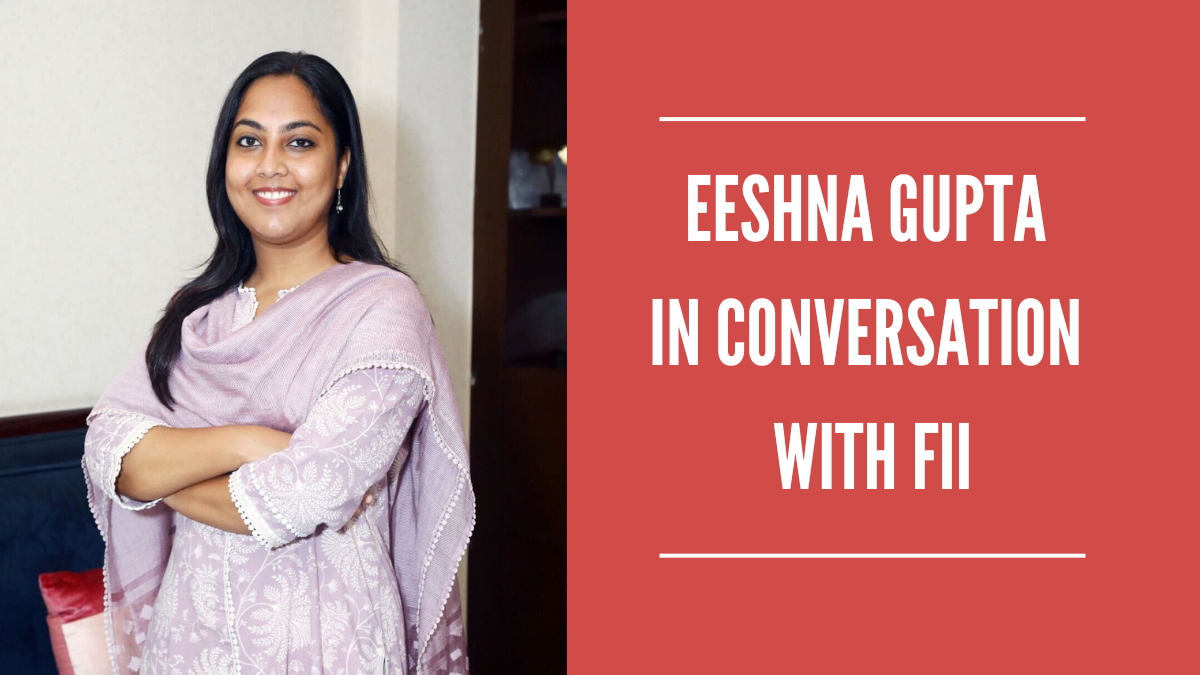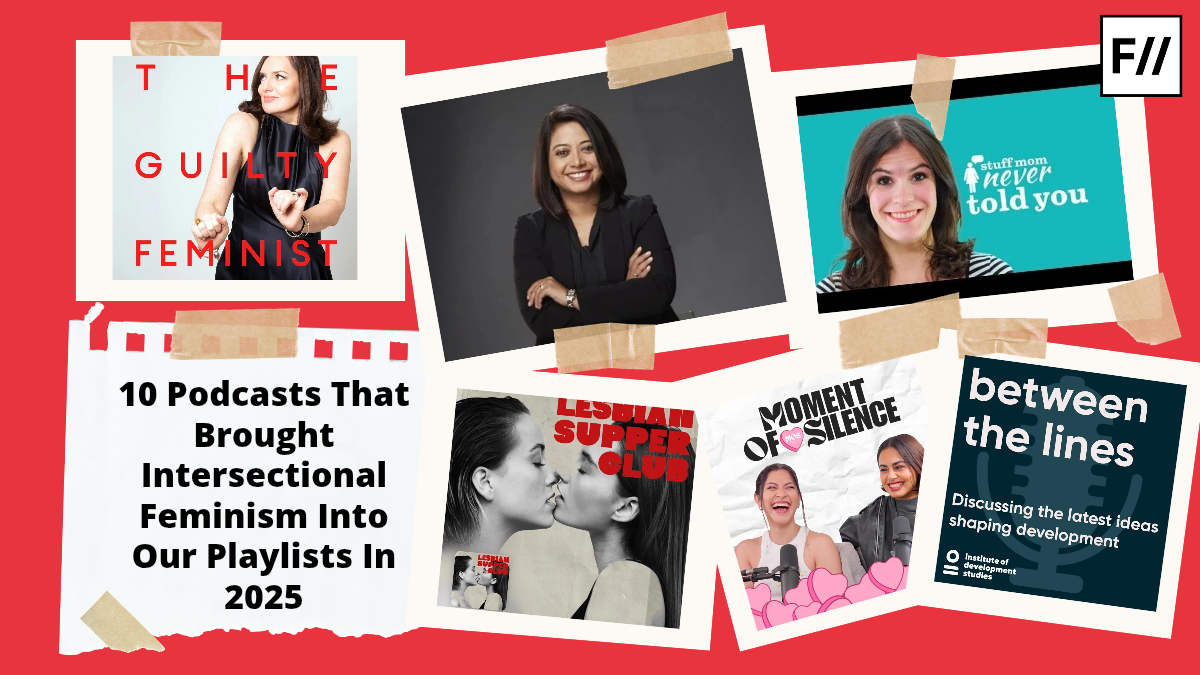I definitely do not think there are enough women in audio, and especially on the technical side, there need to be more
Mae Mariyam Thomas
Trailblazers in the Indian audio space have been few and far between ever since the first radio broadcast took place in the country in 1923. The waves, though, have been shifting of late (quite literally) with fresher formats of audio ushering in a new era.
At the vanguard of this change in recent times has been Mae Mariyam Thomas, who started out with community radio in the United Kingdom before kick-starting Maed in India, a podcast that is now the flagship show for the company of the same name.
In an exclusive interaction with FII, Thomas discussed Maed’s journey and ambitions, what makes audio the most authentic medium, representation of women in India’s audio industry, her favourite podcasts, and much more.
This conversation was organised by Spotify India as part of its AmplifiHer campaign that aims to shine the spotlight on women in audio.
Q: You have worked in radio in the United Kingdom as well as in India. What are the biggest differences you have noticed in terms of how radio works in these two countries?
A: I started my career as a radio journalist in the United Kingdom. I was in Wales, working for a community radio station in Newport. When I came back to India, I realised that you cannot do journalism on private or commercial radio. That was a huge shock, to find out that you cannot report the news on private FMs.
Compared to the United Kingdom, there is far less variety in terms of the radio content in India. There is no genre-based radio, no focus station…and it has a lot to do with how expensive radio licensing is in India.
At the end of the day, most decisions in Indian radio are based on how more money can be brought in, which is understandable, but such an approach can also stifle creative freedom.
Also read: In Conversation With Priya Saraiya: From Child Prodigy To Bollywood Lyricist & Singer
Q: Audio is both more intimate and less revelatory than video, since the only identifier of the show host or panelist is their voice. Does this allow for a more genuine connection to develop between the speaker and the audience, or is a visual format, especially in the age of Instagram, always more engaging?
A: One area where audio has a significant advantage is that you do not need active screetime to consume audio.
As an experiential medium, audio is quite intimate and personal. When you meet a radio presenter, you feel you have known them all your life. Because you have been listening to them everyday and you feel they are your friend. That brings about a sense of familiarity, authenticity, and trust.
Nowadays with podcasting, the active attention time from the audience is far longer than other media. On average, it is around 20 to 25 minutes, whereas for a YouTube video, it may be a quarter of that time.
Podcasting has become a sort of a companion activity, and a lot of listenership trends during the pandemic back that up.
Q: Do you see audio and podcasts as potential antidotes to the deplorable levels of television journalism nowadays?
A: In India there are not enough journalistic, documentary style podcasts. Because there is not enough investment or time.
This is not to say that journalistic podcasts cannot or do not exist at all in India. Some of the bigger names in the media scene do have a number of quality podcasts. My personal favourite is 3 Things by The Indian Express.
At Maed in India, we have also done a show called On the Contrary, whose second season will be out soon. It made me realise that in terms of journalism, podcasts have so much room for nuanced discussions. You can be on the same side of the argument as another person but still have a lot of differences in terms of where exactly you are placed on the spectrum of opinions.

Q: Your Maed in India podcasts, among other things have rejuvenated the indie music circuit in India. When and how did you come up with this idea and how have the podcasts evolved over time?
A: Initially, when I was approached to make a podcast, I wanted to do an indie music show where I could get artists to come to the studio and perform live. It is unbelievably expensive to record music, and one of the things I wanted to do was to give undiscovered artists a platform regardless of whether they were able to record and release their music later.
Maed in India, for me, represented music discovery. That was the crux of the show. And now the show has become a conduit to many other things, such as talking about artist rights and educating people on how to make podcasts.
Q: How has the experience of collaborating for the Spotify Sound Up campaign, which aims to give a platform to underrepresented voices, been like for you?
A: It is quite exciting to be a part of Sound Up, because of the focus on independent creators. Sound Up has become an incredible programme with an ability to support underrepresented voices in the audio space. To be able to work on this and impart all the knowledge I have built up across the years has been a great opportunity.
Q: Over the last decade or so, there has been an abundance of female RJs as well as several prominent podcasts hosted by women. But what about behind the scenes roles, how frequently are women represented in those departments across the audio industry in India?
A: I definitely do not think there are enough women in audio, and especially on the technical side, there need to be more.
I think a change is happening slowly, but it has to come with the realisation that getting women into more technical jobs also means cultivating a greater interest in them for these kinds of roles.
For my part, I am trying to work with more women writers, commission more pilots for certain women-centric shows, among other things. But if I ask myself right now how many audio or sound designers I know who are women, I can barely count more than a handful.
Also read: Men Dominate Bollywood And The Music Industry: Asees Kaur
Q: How do you see yourself evolving in the world of podcasts in a few years’ time? What are the formats you are still excited to explore?
A: I want to explore more non-fiction, especially around legal issues in India. We are working with a lot of companies and NGOs in the development sector and we want to dabble in sports, too.
We are also doing a lot of fiction content, and I really want us to up our game in the sound design space. We have already been commissioned to do some fiction shows, especially in the children’s space.
There is a lot of stuff to explore, sometimes it can be a bit overwhelming!
Q: Lastly, would you like to recommend some fantastic podcasts for FII readers that you never fail to listen to?
A: At the moment, I am binging on this Australian show called Stuff the British Stole. The first episode is called ‘A Tiger and a Scream’ and it is about a toy tiger and how it stood for the struggle between India and the British Empire.
A show I listen to regularly is this Indian podcast called Simblified. I always go back to it because it makes me laugh so much!
And let me suggest one in-house podcast as my final pick, which would be The Lit Pickers, where you have got these two amazing women talking about the books they love and it is so much fun!
All images courtesy Mae Mariyam Thomas
About the author(s)
Priyam Marik is a freelance journalist based in Kolkata, writing on politics, culture, and sport. He completed his Master’s in journalism from the University of Sussex, United Kingdom in 2020. Priyam is also a published poet, and his first book Scintillae, came out in July 2019. When not writing, Priyam loves to debate, sample new cuisines, and cheer for FC Barcelona.




